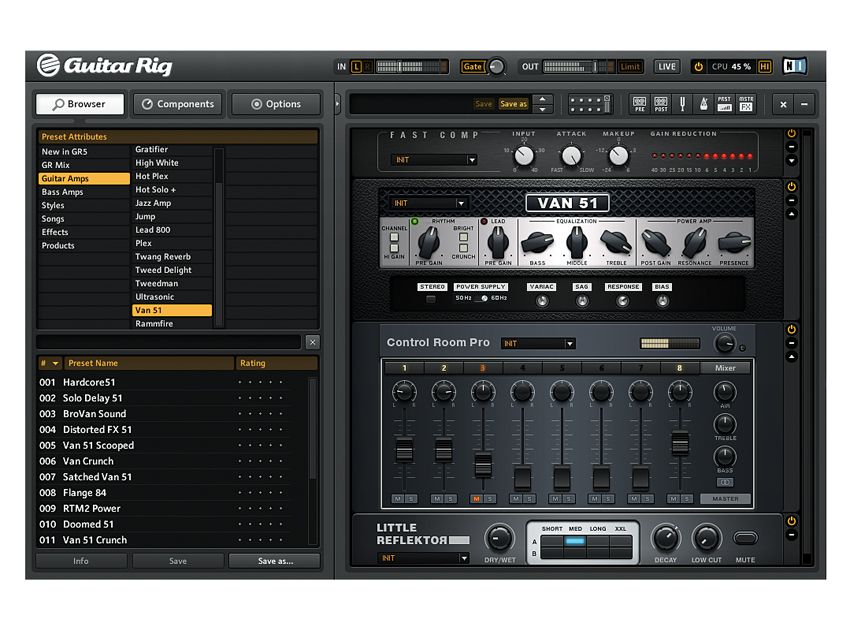


However, adding either or both tends to increase the gain or drive, and so the amp may have to be adjusted down to some degree to maintain the same amount of hair. With either or both in place, listen to the comparison and how much more alive a preset can sound (I did not do this on the demo, but do download the free demo version and give it a try). First is the Transient Master (select ‘Zep Room’) and the other is the VC76 model (select ‘Electric Guitar’) run each separately and together, since they both are complimentary. The program includes various dynamics, two of which I really like.

But even if the real amp and the other modelers are better (more so for crunch and hi-gain, as the cleans are sublime), as some demo gear personnel have suggested, there are a few recommendations I would like to make. I have no opinion on that, but I can say that I am impressed with the amps and cabs in version 6.Ĭan one compare the amps and cabs with Guitar Rig 6 to a real amp, or perhaps the sounds from an Axe-Fx or Kemper? I don’t think they are that far removed, thanks in part to the new machining technology and the custom cab IRs by Ownhammer and 3 Sigma Audio. However, based on forum discussions, many people have found previous versions of Guitar Rig good for home practice and perhaps some general recording, but that the program lacked liveliness, insofar as the sound of the amps and cabs were concerned. I have used other VST plug-ins, although I found them somewhat sterile sounding (which may not be a surprise since that experience is at least a decade old). So far, this is straight forward, and do realize that I’m basing my review and opinion on not having worked with previous Guitar Rig versions.


 0 kommentar(er)
0 kommentar(er)
